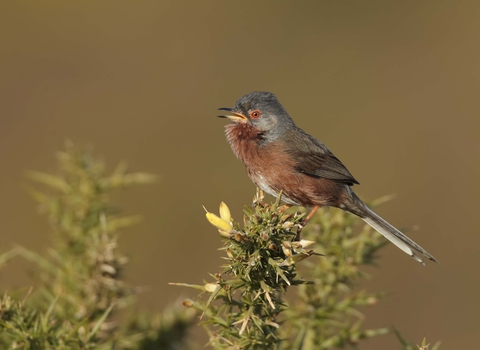
©Richard Steel/2020VISION
Dartford warbler
The small, brown Dartford warbler is most easily spotted when warbling its scratchy song from the top of a gorse stem. It lives on lowland heathland in the south of England, where it nests on the ground.
Scientific name
Sylvia undataWhen to see
January to DecemberSpecies information
Category
Statistics
Length: 12cmWingspan: 16cm
Weight: 10g
Average lifespan: Up to 5 years
Classified in the UK as Amber under the Birds of Conservation Concern 45: the Red List for Birds (2021). Protected in the UK under the Wildlife and Countryside Act, 1981. listed as Near Threatened on the global IUCN Red List of Threatened Species.
